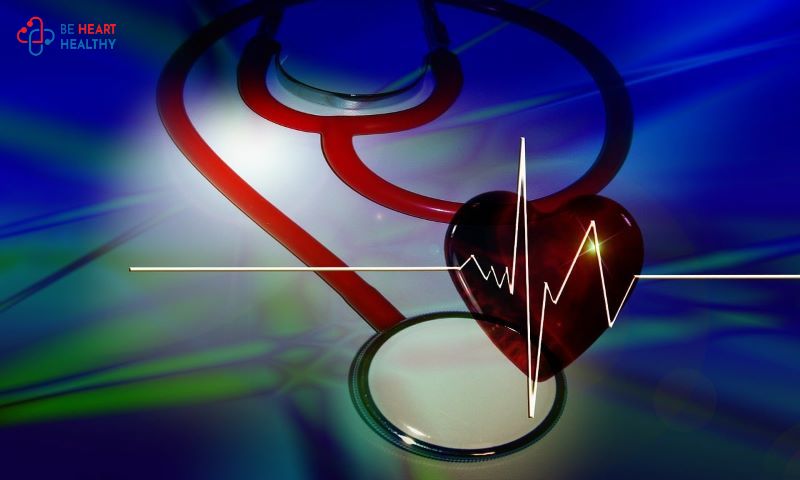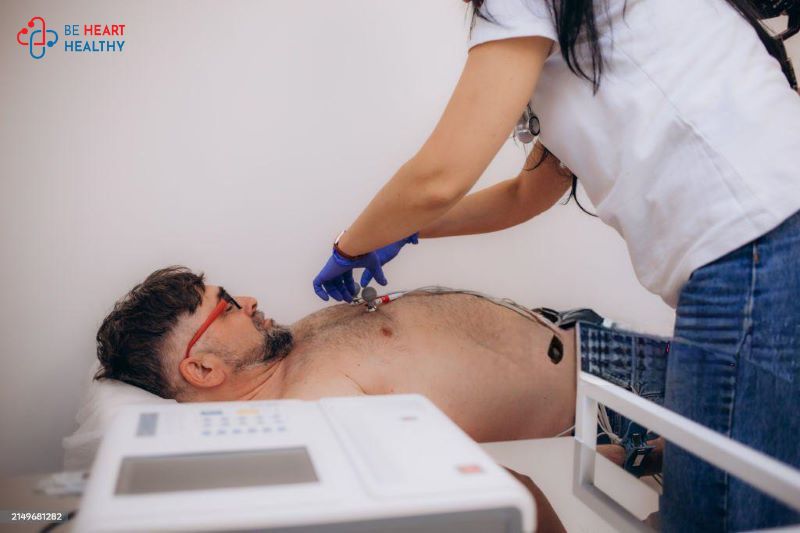Your heart health is very important because your heart is the muscle that pumps blood throughout the body. The heart is made up of four chambers- 2 above (called atria) and 2 below (called ventricles). For efficient pumping, the chambers must contract in a coordinated manner. If this is uncoordinated it can lead to ineffective pumping of blood. Cardiac Resynchronization Therapy is used to treat this condition. It can help the heart beat with the right rhythm.
What Is Cardiac Resynchronization Therapy?
Cardiac Resynchronization Therapy (CRT) was introduced in the 1990s 1. Minor surgery is required to implant the CRT device.
In CRT, an electronic device (no bigger than a pocket watch) is connected to your heart via three insulated wires (leads). These monitor the heart rate and detect irregularities. Then they send tiny electrical impulses to correct them 2. . This type of stimulation is called “biventricular pacing” and it helps the heart pump blood effectively throughout the body.
Sometimes people with heart failure can develop very erratic heartbeats which are called “arrhythmias”. These are life-threatening. In this situation, cardiologists use an additional device called an Implantable Cardioverter-Defibrillator which can shock the heart and reset the heartbeat.
Who Is It For?
Cardiologists recommend CRT for various heart diseases such as those described below.
If the ventricles do not contract together the heart cannot effectively pump blood throughout the body. This condition is called heart failure. It can cause fluid buildup in your lungs and legs leading to symptoms. CRT is recommended in patients with heart failure, where medication and lifestyle changes have failed. It is recommended especially if they have severe symptoms but recent evidence suggests that CRT may be effective in patients with mild symptoms too3–5.
Electrical impulses generated within the heart signals the heart to contract. These impulses are conducted throughout the heart by a conducting system. If the system cannot conduct to the left ventricle the ventricles cannot contract properly. This heart disease is called “left bundle branch block” and can be treated by CRT6.

Benefits of CRT
CRT will improve the function of the heart ergo the supply of blood to the body. As a result, it can alleviate symptoms of heart failure 7,8.
Studies show a decrease in hospitalization as well as improvement in quality of life for patients with heart failure 2,9. CRT can improve mortality of patients with heart failure as well 5.
The Procedure
The patient will most likely be awake during the procedure and given local anesthesia along with medication for relaxation. Vital signs are monitored throughout.
The interventional cardiologist inserts the “leads” into a major vein under or near the collarbone and directs them to the heart with the help of x-ray images. One end of each wire is embedded into the ventricles. The other end is attached to the device. The device is placed in a small pocket under the skin.
After the procedure, when the blood pressure, pulse, and breathing stabilize they can be sent home 10
The Risks
CRT is not considered dangerous at all and risks are very rare. They include but are not limited to the following-
- Collapsed lung due to lead puncturing the lung in 1.4% 11.
- Bleeding and collection of blood around the heart (cardiac tamponade) in 0.2% 11.
- Formation of a blood clot in 3%11.
After the procedure, you may experience some complications like-
- Bruising over the site.
- Infection
- Leads can get dislodged or move from the original site in 5-7% of cases 9.
- Leads can shock the heart inappropriately.
3-4% of people may have no improvement of symptoms due to CRT10.
While the risks may seem daunting, rest assured that with trained hands their occurrence is extremely unlikely.
Conclusion
Your heart specialist will only recommend CRT after a thorough assessment. Always consult your consultant cardiologist before opting for CRT.
- Leclercq C, Bleeker GB, Linde C, et al. Cardiac resynchronization therapy: Clinical results and evolution of candidate selection. Eur Hear Journal, Suppl. 2007;9(I). doi:10.1093/eurheartj/sum066
- Cardiac Resynchronization Therapy. https://www.heart.org/en/health-topics/heart-failure/treatment-options-for-heart-failure/cardiac-resynchronization-therapy-crt
- Linde C, Abraham WT, Gold MR, St. John Sutton M, Ghio S, Daubert C. Randomized Trial of Cardiac Resynchronization in Mildly Symptomatic Heart Failure Patients and in Asymptomatic Patients With Left Ventricular Dysfunction and Previous Heart Failure Symptoms. J Am Coll Cardiol. 2008;52(23). doi:10.1016/j.jacc.2008.08.027
- Moss AJ, Hall WJ, Cannom DS, et al. Cardiac-Resynchronization Therapy for the Prevention of Heart-Failure Events. N Engl J Med. 2009;361(14). doi:10.1056/nejmoa0906431
- Tang A. Cardiac-Resynchronization Therapy for Mild-to-Moderate Heart Failure Anthony (RAFT). N Engl J Med. 2010;363(25).
- Boriani G, Gasparini M, Landolina M, et al. Impact of mitral regurgitation on the outcome of patients treated with CRT-D: Data from the InSync ICD Italian registry. PACE – Pacing Clin Electrophysiol. 2012;35(2). doi:10.1111/j.1540-8159.2011.03280.x
- Bristow MR, Saxon LA, Boehmer J, et al. Cardiac-Resynchronization Therapy with or without an Implantable Defibrillator in Advanced Chronic Heart Failure. N Engl J Med. 2004;350(21). doi:10.1056/nejmoa032423
- Young JB, Abraham WT, Smith AL, et al. Combined Cardiac Resynchronization and Implantable Cardioversion Defibrillation in Advanced Chronic Heart Failure: The MIRACLE ICD Trial. J Am Med Assoc. 2003;289(20). doi:10.1001/jama.289.20.2685
- Agrawal A. Cardiac Resynchronization Therapy. https://emedicine.medscape.com/article/1839506-overview#a2
- Implantation of a Cardiac Resynchronisation Therapy-Defibrillator (CRT-D). https://www.ouh.nhs.uk/patient-guide/leaflets/files/12323Pcrt-d.pdf
- Sridhar ARM, Yarlagadda V, Parasa S, et al. Cardiac Resynchronization Therapy: US Trends and Disparities in Utilization and Outcomes. Circ Arrhythmia Electrophysiol. 2016;9(3). doi:10.1161/CIRCEP.115.003108



